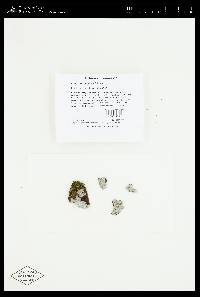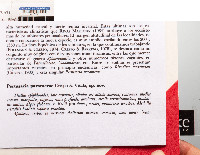
- Home
- Search
- Images
- Species Checklists
- US States: O-Z >
- US National Parks
- Central America
- South America
- US National Parks
- Southern Subpolar Region
|
|
|
|
Family: Pertusariaceae
|
MB# 114412 TYPE. UNITED STATES. North Carolina, Guilford Co., 8 mi. SW of Greensboro, on trunk of Quercus falcata, 10.VI.1969, M.J. Dibben 20653 (DUKE, holotype). Description. Life form: lichenized fungus. [modified from Dibben 1980] Thallus gray or yellowish-gray, episubstratal, thin to moderately thick or thicker, the margin +/- entire and at times zoned, generally more yellow-white than the thallus). Surface initially smooth to soon heavily verrucose, shiny or matt, predominantly continuous to locally lightly fissured (substrate, never areolate. Vegetative diaspores absent. Fertile warts high-arched and hemispherical or flat-topped, generally smooth-surfaced (rarely radiately-fissured), numerous and crowded, often fused 2-5(-8) or as multiperforate sheets, (0.4-)0.8(-2.2) mm diam. Ostioles 1 or 2-4-(5) or more per wart, always dark beneath, level or minutely papillate, infrequently surrounded by a yellow-pink border, but predominantly sunken, (0.05-)0.1(-0.2) mm wide, at times grouped in a central depression, (0.1-0-.4-(0.8) mm in diam. Ascomata pertusaroid apothecia (1-)2-3(-5) per wart, (0.24-)0.55(-0.96) mm in diameter; hymenium hyaline to yellow-brown; hypothecium pallid (rarely hyaline); epithecium hyaline to dark-brown or black, K- or K+ weakly wine-red. Asci clavate or cylindrical, (35-)58(-85) x (235-)335(-445) μm. Ascospores 8 per ascus, predominantly biseriate and irregular (occasionally lateral) to less often (apically) uniseriate in ascus, simple, ellipsoid or fusiform, (20-)35(-50) x (50-)85(-135) μm, the wall and lumen K-. Outer spore wall (1)-3-(7) μm thick, at times thickest in the midplane; inner spore wall (2)-4-(9) μm thick, smooth, unzoned, but always trimmed; end wall (6)-13-(28) μm thick. Conidiomata not seen. Chemistry. Cortex UV- or + weakly orange-pink, K-, KC-, C-, PD-; medulla UV-, K-, KC-, C-, PD-; unknome xanthone detected by TLC. Substrate and habitat. Corticolous or muscicolous on hardwood trees, rarely on conifers. Distribution. Eastern North America; in North Carolina found throughout. Literature Dibben, M.J. (1980) The Chemosystematics of the Lichen Genus Pertusaria in North America North of Mexico. Publications in Biology and Geology No. 5, Milwaukee Public Museum Press, Milwaukee. 162 pp. |
|
|
|





































































































